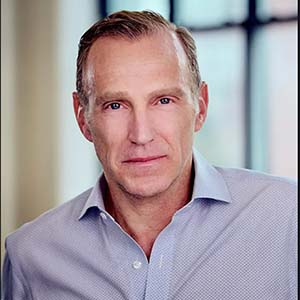Ad spend is a key metric in the Technology, Internet, Media and Telecoms (TIMT) industries, and software firm Double Verify has built its business around helping companies to get value for their dollars. The company aims to ensure that digital media ad spend is delivered in a brand-safe environment that's free of fraud and that the impressions that companies are seeing delivered are viewable by a human being.
Spending on digital ads was growing rapidly for a number of years, but has had a bumpy ride through the pandemic and in the current macro environment. According to Statista, ad spending growth jumped to 6.1% in 2021 after a dip of -1.5% in 2020. But in 2022, it dropped again to 1.3% and the coming years are projected to see a fall from this year’s 4.5% - down to 2.9% in 2024 and 2.1% in 2025.
Despite these bumps, Double Verify has a reputation of staying resilient in the current economic environment, which CEO Mark Zagorski puts down to its diverse growth drivers.
“We've looked at this year as being one in which there's neither headwinds nor tailwinds, it's kind of one of stasis,” he said at this year’s TIMT Conference.
“We've got a matrix of growth drivers that include launching new products, covering more sectors with our verification capabilities, and moving into new geographies and new markets. All of those have allowed us to be pretty resilient.”
How not to court controversy
Part of this resilience is also down to the constantly evolving definition of brand safety, where Double Verify operates. This encompasses not only the content of the ads themselves, but also where they are hosted and the content they are hosted alongside.
“What may have been considered brand safe or brand suitable two years or three years ago is no longer so today. And what may be considered non-brand safe today may in the future be considered brand safe. So it's a constantly moving target for advertisers,” said Zagorski.
“What may have been considered brand safe or brand suitable two years or three years ago is no longer so today. And what may be considered non-brand safe today may in the future be considered brand safe. So it's a constantly moving target for advertisers.”- Mark Zagorski, CEO, Double Verify
Safety can seem like a binary concept, with advertisers seeking to steer clear of controversy, but there are always changing norms around what’s edgy and what’s controversial. With suitability, it’s about different audiences, even within the same company.
“Advertisers don't want to be around pornography or hate speech, but things like suitability are really specific. We work, for example, with Unilever. Unilever sells Dove soap to moms, and it sells Axe body spray to teenagers. What's suitable for one audience is not suitable for the other,” he added.
Picking your platform
The platform adds another dimension to digital ads that further complicates things, particularly on social media. There are issues with which platform to choose that have to do not only with popularity and audience, but also with safety and suitability. And then there’s the format of the ad. The growing popularity of TikTok poses problems for ensuring brand safety because of how many different kinds of content can be in a single post.
“[On TikTok] you've got video, you've got audio, you've got text, you've got metadata, and you may even have text on top of the video - none of which may relate to each other. So the analysis of all of this to ensure that it's suitable for a brand becomes pretty complex.”- Mark Zagorski, CEO, Double Verify
“You've got video, you've got audio, you've got text, you've got metadata, and you may even have text on top of the video - none of which may relate to each other. So the analysis of all of this to ensure that it's suitable for a brand becomes pretty complex,” Zagorski said.
Artificial intelligence (AI) may help provide an answer here in creating algorithms that help to analyze video content. But AI is also a headache when there are AI bots creating thousands of new pieces of content that attract ads, but are not content that advertisers want to be associated with.
Fighting AI with AI
“We've seen a massive proliferation of what we call “made-for-advertising content,” and this is content that's generated by AI. You may have seen some of these websites out there, you know, “Seven Ways to Cure Belly Fat.” Those kinds of articles used to be written by very low-paid article writers. Today, AI is creating those, and they're not creating ten or 12 articles a day. An AI engine can create a thousand articles a day and push them across 10,000 generated websites,” Zagorski explained.
“So you're looking at millions more pieces of information and documentation that gets pushed out every day that's created by AI bots and attracts advertising. And some advertisers don't understand what the nature of the content is and in some cases, don't want to be around that content. For us, it's created an opportunity to build filtering tools to avoid things like MFA content - we're actually using fire to fight fire. We're using AI-driven analysis to smoke out AI-driven content so that advertisers can avoid that.”
Featured Guest:

Mark Zagorski
CEO, Double Verify